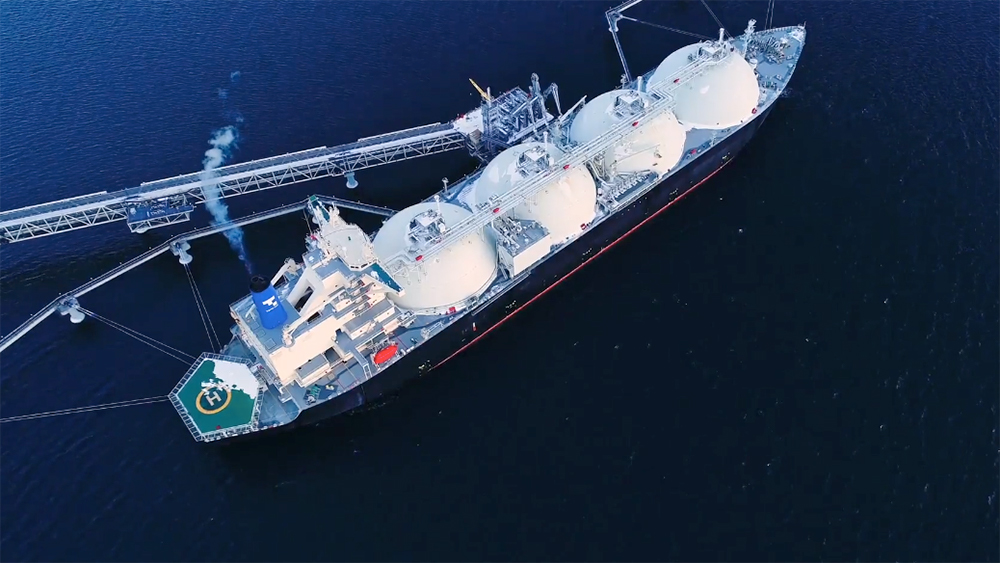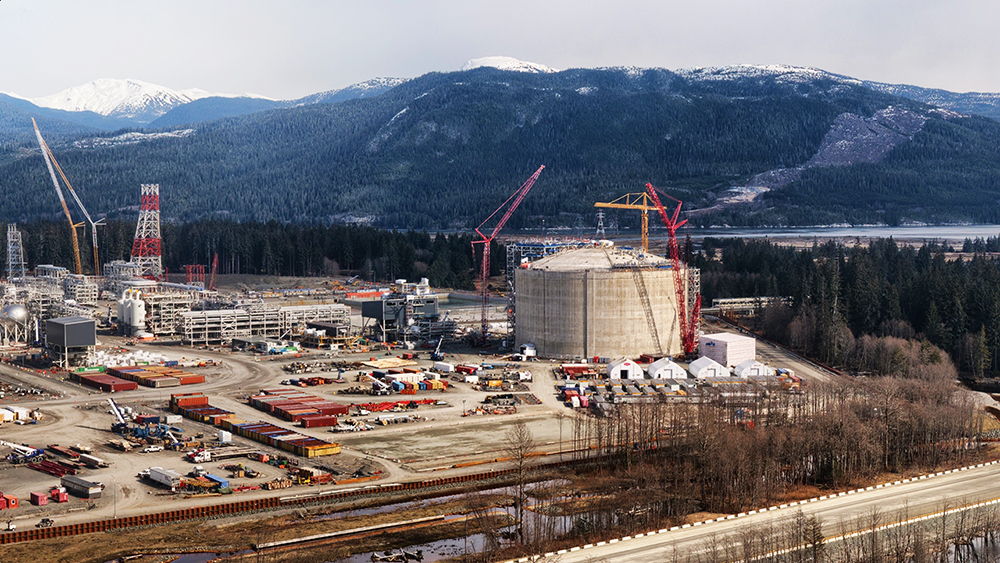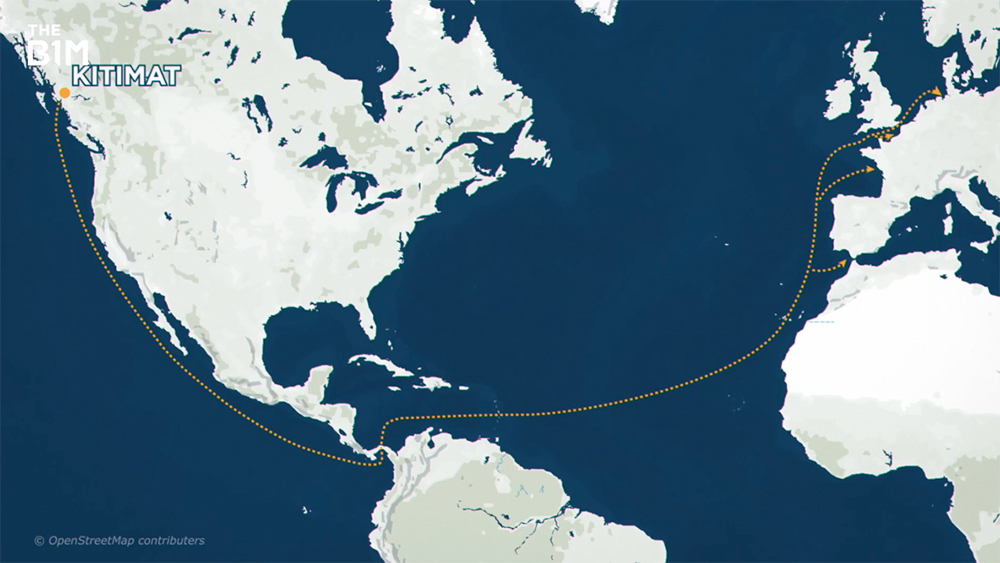Canada's $30BN Gamble to Become an Energy Superpower
- Youtube Views 1,877,637 VIDEO VIEWS
Video narrated by Fred Mills. This video and article contain paid promotion for Bluebeam.
THIS is one of the biggest energy megaprojects in North America, but you’ve probably never heard of it.
That’s because it’s a type of infrastructure that doesn’t get as much attention as power plants or dams, despite being equally hard to build, and just as crucial to the world’s power supply.
With the global energy crisis showing no sign of stopping, gas bills still extremely high and shortages made worse by Russia’s invasion of Ukraine, ensuring there’s enough of the stuff to go around has become a bit of a challenge.
When this enormous new facility in Canada completes in a few years though, it could provide a much-needed new source of fuel that’ll reach far and wide, as well as a big economic boost.
The country’s Prime Minister Justin Trudeau once called it the single largest private sector investment in the history of Canada.
But in an industry where competition between countries is fiercer than ever, and with renewables on the rise, is this Canada’s chance to become the next energy superpower, or has it missed the boat?

Above: The LNG Canada terminal under construction in Kimitat, British Columbia. Image courtesy of LNG Canada.
OK, so let’s get right to it, then — what exactly is this megaproject and why does it require digging up such a huge chunk of this stunning landscape?
Well, it’s all taking place in the small town of Kitimat, and the consortium behind it goes by the name LNG Canada. LNG stands for liquefied natural gas.
And yes, we know what you’re thinking, and you’re right. Fossil fuels are bad, and Canada is supposedly a world leader in renewable energy, so why are they building something like this?
You see, Canada is one of the world’s biggest producers of natural gas, but unlike the US, Qatar and Australia, it doesn’t have any way of exporting it overseas.
“The gas industry sees a huge amount of gas underground in a place called the Montney Basin, in northeastern British Columbia … and they’re thinking ‘we need to get this stuff to market. We need to be able to make some money from this,’ Clark Williams-Derry, energy finance analyst at the Institute for Energy Economics and Financial Analysis (IEEFA), said.
“But the problem is there’s not a big population centre nearby. They need to get it somewhere else.”
Hence why Canada is now building its first LNG scheme — set to cost more than CAD $40BN in total — a task that, as these pictures clearly show, is more than a little complicated.
Hang on a minute, let’s take a step back before we go any further. Isn’t natural gas a … gas? Not a liquid? Obviously, that is true. It’ll still be a gas when it comes into this new terminal via the Coastal GasLink — a new 670km pipeline that runs all the way from the source up in Dawson Creek.
But if you want to send gas to another country or continent, there’s an ocean in the way and it’s too far to simply build another pipeline, you’ll need special tankers.

Above: Liquefied natural gas is exported in tanks on the back of large ships.
To make it safe for transport, and so you can fit as much of it as possible on board, the gas has to be converted into a liquid. Then it’s placed in these huge tanks and shipped over, before it’s turned back into a gas at the other end.
It sounds simple when you summarise it like that, but the actual process is far from it, and the same goes for the construction.
Now, we’re not going to explain what every single component on this site does, and how it’s being built, because that would clearly take some time, so instead we’ll pick out a few highlights.
Firstly, those things that look like huge cages covered in pipes are the process modules that stand 35 metres tall and weigh over 4,500 tonnes.
Its job is to act as the entry point for gas coming in from the pipeline, and send it on to be treated and processed. These giant structures were all manufactured in China and carried over on ships.
To get them from the port to the site though, they had to be placed on the back of large transporters and carefully moved by road, before being lowered onto specially built foundations. This wasn’t a one-off task either; in total, more than a dozen of these modules are going in.
Next, there’s the absorber column. It’s used to remove carbon dioxide from the gas before it’s liquefied. Weighing over 800 tonnes and measuring 54 metres long, it’s the largest single piece of equipment at the site, requiring several hours and three cranes for the installation.
But the one thing you really can’t help but notice when looking down from above is the massive main storage tank.

Above: This is where gas is stored before it’s piped onto a ship. Image courtesy of LNG Canada.
52 metres high and 92 metres in diameter, the colossal container is one of the biggest of its kind in the world, with a domed roof that had to be lifted into place — very slowly.
The lift was done using fans, which gradually pressurised the tank and raised the roof over three hours. Once in position, welders fixed it into place and the air pressure inside could return to normal.
With construction now over 70% complete, the terminal is set to come online some time in the middle of this decade.
As for where all this gas is likely to go, Asia is the main target. It’s the next closest continent to Canada’s west coast, many countries here are dependent on gas that has to be imported, and others are still burning coal — the worst of all fossil fuels.
Yes, natural gas is a fossil fuel too, but it’s not as bad as coal, so technically it is a lower-carbon form of energy. Is it really going to get countries like China to stop using coal, though?
“China is importing large amounts of LNG but they're still building coal plants. They don't necessarily use it for electricity; it's often used for domestic consumption, or it's used for powering industry,” Williams-Derry explained.
“So as far as getting off coal, well, that may be one of the possibilities that may happen. Or it could just be that places like China will import LNG and still burn their domestic coal because coal is cheaper.”
What about Europe, which has had to scramble over the past year to fill the gap in its gas supplies left behind by Russia and its war on Ukraine?
According to Shell, one of the five companies behind LNG Canada, LNG imports to Europe increased by 60% in 2022.
Surely, then, one of the world’s biggest gas producers suddenly becoming an exporter is good news for Europeans?
Well, first of all they’re in the opposite direction to Asia — which would mean very long journeys to reach them. Also, despite needing more of it in the short term, Europe is pushing hard to get off fossil fuels for good, as soon as possible.

Above: Getting from Kitimat to Europe is not straightforward.
Right there is where you have one of the potential problems with this whole project — the timing. When it finally gets up and running, many nations are going to be looking at much cleaner alternatives to natural gas, and the chances are that overall demand will be lower by then.
Canada will be coming up against competitors that have already been doing LNG for years, too. Another issue is the cost, which has grown significantly — not on the LNG terminal, but with that pipeline.
There’s also the impact on local communities — the First Nations. LNG Canada says it’s working closely with them on the main site, yet there have been disagreements further inland.
“The Coastal GasLink pipeline was originally estimated to cost about $6 billion. The latest cost estimate is $14 billion, and these are Canadian dollars,” Williams-Derry said.
“And then at the same time, First Nations, the Aboriginal people of the Montney Basin, have been concerned about the impacts of drilling and forestry on their hunting and fishing rights.”
The industry had to make an agreement with the government and the First Nations that limited the amount of drilling in the Basin, and that could push up the cost of supply too.
Overall, then, LNG Canada represents something of a gamble for the companies involved, and the country. It’s undeniably impressive from a construction point of view, and it’s offering something that’s clearly needed at the moment all over the world.
But as is often the case with these megaprojects, whether it ends up being worth the cost — both financially and environmentally — remains to be seen.
This video was powered by Bluebeam. Read about how Bluebeam Revu helped one company in the oil and gas industry go from paper to digital turnover packages here.
Additional footage and imagery courtesy of LNG Canada, CBC Vancouver, CNBC, Justin Trudeau - Prime Minister of Canada and Sony Pictures Television.
We welcome you sharing our content to inspire others but please be nice and play by our rules.








